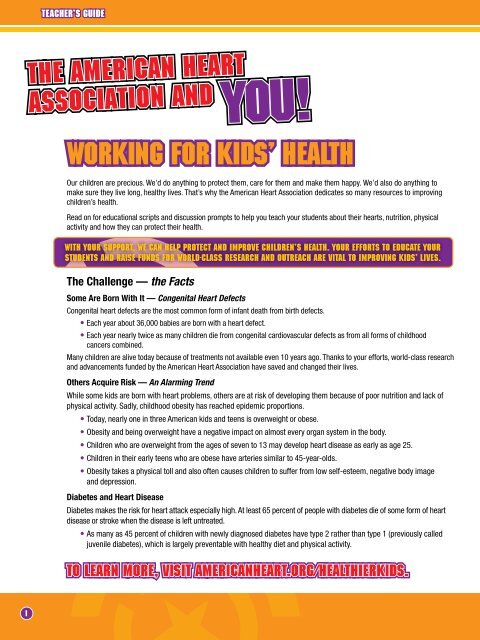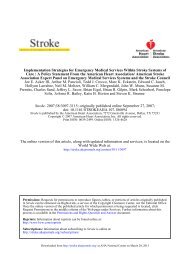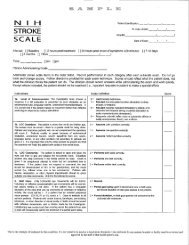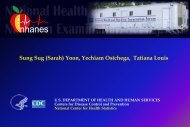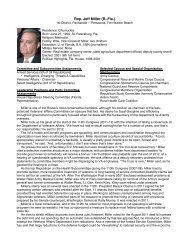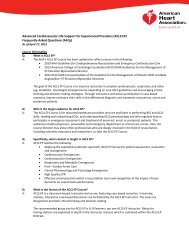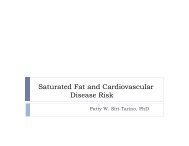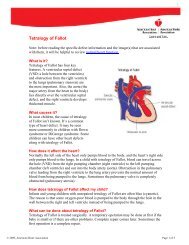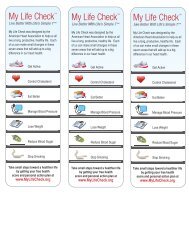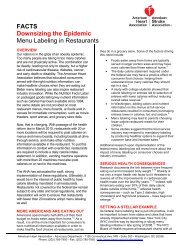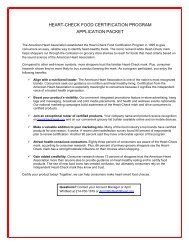Teacher's Resource Guide - American Heart Association
Teacher's Resource Guide - American Heart Association
Teacher's Resource Guide - American Heart Association
Create successful ePaper yourself
Turn your PDF publications into a flip-book with our unique Google optimized e-Paper software.
teacher’s <strong>Guide</strong><br />
The <strong>American</strong> <strong>Heart</strong><br />
<strong>Association</strong> and YOU!<br />
Working for Kids’ Health<br />
Our children are precious. We’d do anything to protect them, care for them and make them happy. We’d also do anything to<br />
make sure they live long, healthy lives. That’s why the <strong>American</strong> <strong>Heart</strong> <strong>Association</strong> dedicates so many resources to improving<br />
children’s health.<br />
Read on for educational scripts and discussion prompts to help you teach your students about their hearts, nutrition, physical<br />
activity and how they can protect their health.<br />
With your support, we can help protect and improve children’s health. Your efforts to educate your<br />
students and raise funds for world-class research and outreach are vital to improving kids’ lives.<br />
The Challenge — the Facts<br />
Some Are Born With It — Congenital <strong>Heart</strong> Defects<br />
Congenital heart defects are the most common form of infant death from birth defects.<br />
• Each year about 36,000 babies are born with a heart defect.<br />
• Each year nearly twice as many children die from congenital cardiovascular defects as from all forms of childhood<br />
cancers combined.<br />
Many children are alive today because of treatments not available even 10 years ago. Thanks to your efforts, world-class research<br />
and advancements funded by the <strong>American</strong> <strong>Heart</strong> <strong>Association</strong> have saved and changed their lives.<br />
Others Acquire Risk — An Alarming Trend<br />
While some kids are born with heart problems, others are at risk of developing them because of poor nutrition and lack of<br />
physical activity. Sadly, childhood obesity has reached epidemic proportions.<br />
• Today, nearly one in three <strong>American</strong> kids and teens is overweight or obese.<br />
• Obesity and being overweight have a negative impact on almost every organ system in the body.<br />
• Children who are overweight from the ages of seven to 13 may develop heart disease as early as age 25.<br />
• Children in their early teens who are obese have arteries similar to 45-year-olds.<br />
• Obesity takes a physical toll and also often causes children to suffer from low self-esteem, negative body image<br />
and depression.<br />
Diabetes and <strong>Heart</strong> Disease<br />
Diabetes makes the risk for heart attack especially high. At least 65 percent of people with diabetes die of some form of heart<br />
disease or stroke when the disease is left untreated.<br />
• As many as 45 percent of children with newly diagnosed diabetes have type 2 rather than type 1 (previously called<br />
juvenile diabetes), which is largely preventable with healthy diet and physical activity.<br />
To learn more, visit americanheart.org/healthierkids.<br />
1


